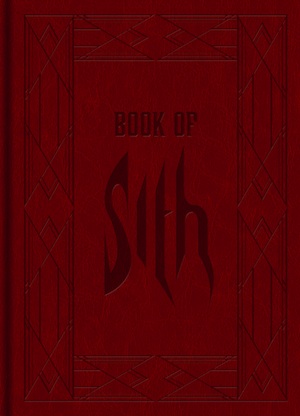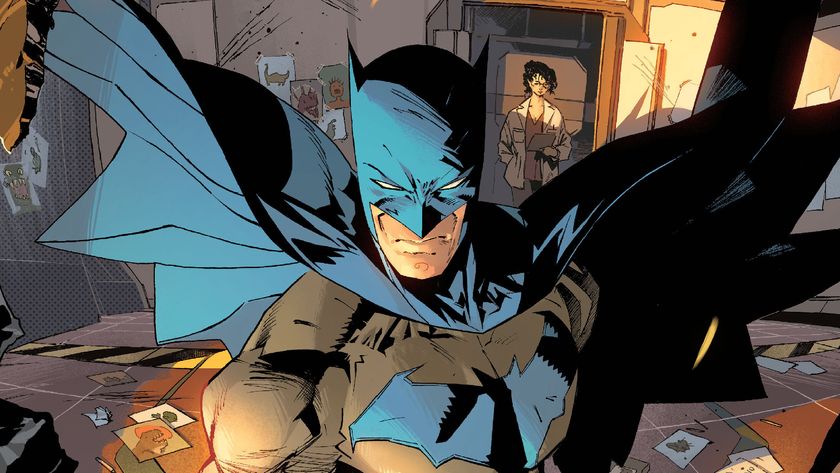Why you can trust 12DOVE
Book of Sith
Written by: Sorzus Syn, Darth Malgus, Darth Bane, Mother Talzin, Darth Plagueis and Darth Sidious and annotated by Darth Sidious, Darth Vader, Asajj Ventress, Yoda, Mace Windu, Quinlan Vos and Luke Skywalker, all working through Daniel Wallace
Art by: Paul Allan Ballard, Jeffrey Carlisle, Chris Reiff, Chris Trevas, Russal Walks, Terryl Whutlatch and the Aristia PTE studio
Published by Titan Books • £12.99
We live, appropriately for Star Wars , in a time of great change. With persistent rumours that the Expanded Universe is either going to be rolled up, closed or just flat-out ignored by the new movies every new Star Wars book feels a little bit like the last one, with a slight hint of desperation tinging the sweeping music and lightsabers. Of course, nothing’s been confirmed yet and chances are things’ll be fine but still, the EU feels a little more fragile than it has done before.
Which makes Book Of Sith a real curiosity. This is the book that was released in the magnificently OTT Sith Holocron box a little while ago with various artefacts included. This version is stripped of both the box and the artefacts, but the book itself is an awful lot of fun if – deliberately – a little patchy.
As the “author” list up there suggests, the conceit is that this is a cobbled-together collection of bits of Sith texts that the Jedi have been able to acquire. This gives the designers the chance to go wonderfully crazy with layout, with the borders, or shape, or paper texture changing every few pages. This faux-piecemeal approach helps the atmosphere no end, especially in the opening section. Written by Sorzus Syn about the foundation of the Sith order, it looks a little bit like an unusually grumpy old bible. The art’s top notch and Syn’s barbaric experiments show how the Sith first got drawn to the manipulation and control of the Force rather than the cooperative relationship the Jedi chose. There’s also a nice contrast between the Jedi Code and the Sith code, showing the two sides of the philosophy in a way which is easy to follow without seeming patronising.
Malgus’ war journal, next, is an interesting echo of future history with Malgus serving the Sith Emperor rather than the… other… Sith emperor. There’s also the origin of the Dark Reaper, which fans of the Clone Wars cartoon should find very familiar.
That highlights an interesting, and at times frustrating, aspect of the book. This is a history of the Sith based largely on stories that have already been written meaning at best it feels like a tantalising glimpse of a massively rich history and at worst a little bit like a greatest hits of evil. However, the Darth Bane section is both very good and stands on its own terms. This is an explanation for why the Rule Of Two was introduced and it not only honours the stories in its past but also echoes forward to the future of the EU in a really nicely-handled way. Whilst the later material about armour and lightsaber types will only be of major interest to Star Wars gamers or cosplayers, it’s still an interesting section that you’ll take a lot from.
And speaking of midichlorians – as very few people wish they have to – Darth Plagueis’ section is also a little creaky. This has more to do with it being the section dealing with the midichlorians than anything else and to be fair, Wallace does what he can. There’s a smart, and slightly snarky, annotation from Luke playing down their importance and the section does some really fun things exploring how the Sith tried, again, to use science to control nature, instead of working with it. This is also the section that deals with cloning and transcending death, so the interminable Palpatine clones of early EU stories are basically Plagueis’ fault. Which may mean he was the Most Evil Sith Lord of them all.
Finally, Sidious himself takes centre stage with an extract from his book on power and how to hold it. Just as the book, and the Sith, began with brutal military might, they close with the velvet glove of media and political manipulation. It’s a smart move, and shows just how far the order has come, Palpatine’s methods subtler but no less effective than Sorzus’.
Book Of Sith is a really odd, and frequently very fun read. The thing Wallace absolutely nails is the order’s evolution over time and fans of the EU will find plenty of easter eggs referencing books from all over the EU’s timeline. I freely admit to knowing almost nothing about the EU beyond the original few novels and I found the book, with the exception of my dislike of Dathomir and Sith weapons geekery, really enjoyable. It’s smartly written, there’s a great running joke about the Sith’ari and the illustrations are frequently excellent. A curiosity definitely, but definitely a worthwhile one.
Alasdair Stuart

Dave is a TV and film journalist who specializes in the science fiction and fantasy genres. He's written books about film posters and post-apocalypses, alongside writing for SFX Magazine for many years.
Most Popular







